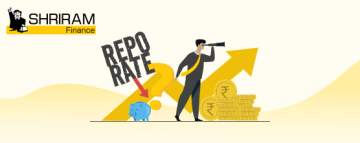The Reserve Bank of India (RBI) plays a pivotal role in managing inflation and guiding economic growth through its monetary policy tools. One of the most important tools among them is the repo rate. By lowering the cost at which banks borrow from the central bank, the RBI aims to encourage lending, stimulate investment, and boost consumption.
On June 6, 2025, the RBI reduced the repo rate by 50 basis points to 5.50%. This strategic move reflects the central bank’s switch to a more ‘neutral’ policy stance.
In that vein, let us take a closer look at how the RBI uses the repo rate to manage inflation, what actually happens when it adjusts this rate, and why it's considered a core part of the central bank’s strategy to keep price levels stable.
Why Inflation Needs Managing in the First Place
Inflation isn’t always bad. A little bit of it, especially in a growing economy, can indicate rising demand and healthy consumption. But when it rises too fast or stays high for too long, it eats into savings, erodes purchasing power, and makes life harder for households, especially those with fixed incomes.
The RBI’s job isn’t to eliminate inflation entirely, but to keep it within a manageable range. The aim is to strike a balance between encouraging growth and maintaining the rupee’s purchasing power.
The current inflation target set by the RBI is 4 percent, with a tolerance band of plus or minus 2 percent. India’s inflation currently comfortably below this threshold is one among many other macroeconomic factors that enabled the RBI to cut the repo rate for a third consecutive time.
How the RBI Targets Inflation
Since adopting a formal inflation targeting framework, the RBI has focused on keeping consumer price inflation within a specific band, not just by guesswork but using structured analysis and policy tools.
This involves:
- Assessing retail inflation through the Consumer Price Index (CPI)
- Responding to demand-side inflation with monetary policy tools
- Maintaining transparency in decision-making so that financial institutions and the public know what to expect
And right at the centre of this framework is the repo rate.
How Does the Repo Rate Actually Control Inflation?
Let’s say the RBI observes inflation inching above its comfort zone. One of the first responses is often to raise the repo rate. This might sound like a routine technical step, but its ripple effect is quite real:
- Financial institutions now borrow at a higher cost
- They respond by increasing interest rates on loans
- Borrowing becomes less attractive for businesses and households
- As spending slows down, demand cools
- Lower demand puts downward pressure on prices
In this way, the repo rate acts like a lever that can increase or reduce the flow of money in the economy, depending on whether inflation needs to be curbed or the economy needs a boost.
What is a Repo Rate Hike?
When inflation is on the rise, the RBI may decide to increase the repo rate to cool down the economy. This is particularly true when inflation is being driven by demand-pull factors. Repo rate hike increases the interest rates on loans, both for individuals and businesses. This discourages borrowing and spending, which in turn reduces demand in the economy.
What Happens When the Repo Rate is Cut?
When inflation is under control but the economy is struggling with low growth or high unemployment, the RBI may implement a repo rate cut. A reduction in the repo rate makes loans cheaper, encouraging businesses to invest in expansion and consumers to spend more. With cheaper credit, there is more money available in the economy, which can stimulate demand for goods and services.
Real Challenges: Why Controlling Inflation Isn’t That Simple
Despite how effective the repo rate might seem on paper, the real world throws a few curveballs. Here are some challenges the RBI often deals with:
1. Supply-Driven Inflation
Inflation caused by supply-side disruptions, such as crop failures, fuel shortages, etc., may not be effectively controlled through repo rate changes. Since these issues stem from physical constraints rather than demand pressures, monetary policy tools have limited impact on resolving them.
2. Weak Transmission
Sometimes, financial institutions delay passing on repo rate changes to borrowers. This can water down the RBI’s efforts and cause a gap between policy intent and market response.
3. External Shocks
Global developments, like oil price spikes or geopolitical tensions, may affect inflation regardless of the repo rate. In such cases, the RBI may need to coordinate with other arms of economic policy to maintain control.
Anchoring Public Expectations
The repo rate does more than control numbers - it shapes public behaviour. Investors and borrowers may form expectations about future prices and investments based on what they think the RBI will do. When the RBI acts decisively, say, with a jumbo rate cut, investors and businesses take the signal seriously.
Conclusion
Inflation management is a constant balancing act, and the repo rate remains one of the most direct levers available to the RBI. While not perfect, it allows the central bank to influence credit conditions, shape public expectations, and guide the economy through uncertain times.
For the average Indian, staying tuned to repo rate announcements isn’t just about knowing what your next EMI might look like. It’s also about understanding the broader signals about where the economy is headed—and how your financial choices might need to shift accordingly.






























